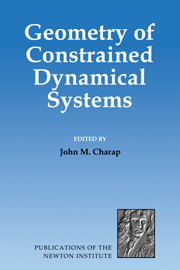6 results

Geometry of Constrained Dynamical Systems
-
- Published online:
- 05 November 2011
- Print publication:
- 05 January 1995
Frontmatter
-
- Book:
- Geometry of Constrained Dynamical Systems
- Published online:
- 05 November 2011
- Print publication:
- 05 January 1995, pp i-vi
-
- Chapter
- Export citation
The network
-
- Book:
- Geometry of Constrained Dynamical Systems
- Published online:
- 05 November 2011
- Print publication:
- 05 January 1995, pp xii-xii
-
- Chapter
- Export citation
Contents
-
- Book:
- Geometry of Constrained Dynamical Systems
- Published online:
- 05 November 2011
- Print publication:
- 05 January 1995, pp vii-xi
-
- Chapter
- Export citation
Preface
-
-
- Book:
- Geometry of Constrained Dynamical Systems
- Published online:
- 05 November 2011
- Print publication:
- 05 January 1995, pp xiii-xiv
-
- Chapter
- Export citation
Participants
-
- Book:
- Geometry of Constrained Dynamical Systems
- Published online:
- 05 November 2011
- Print publication:
- 05 January 1995, pp 332-335
-
- Chapter
- Export citation



